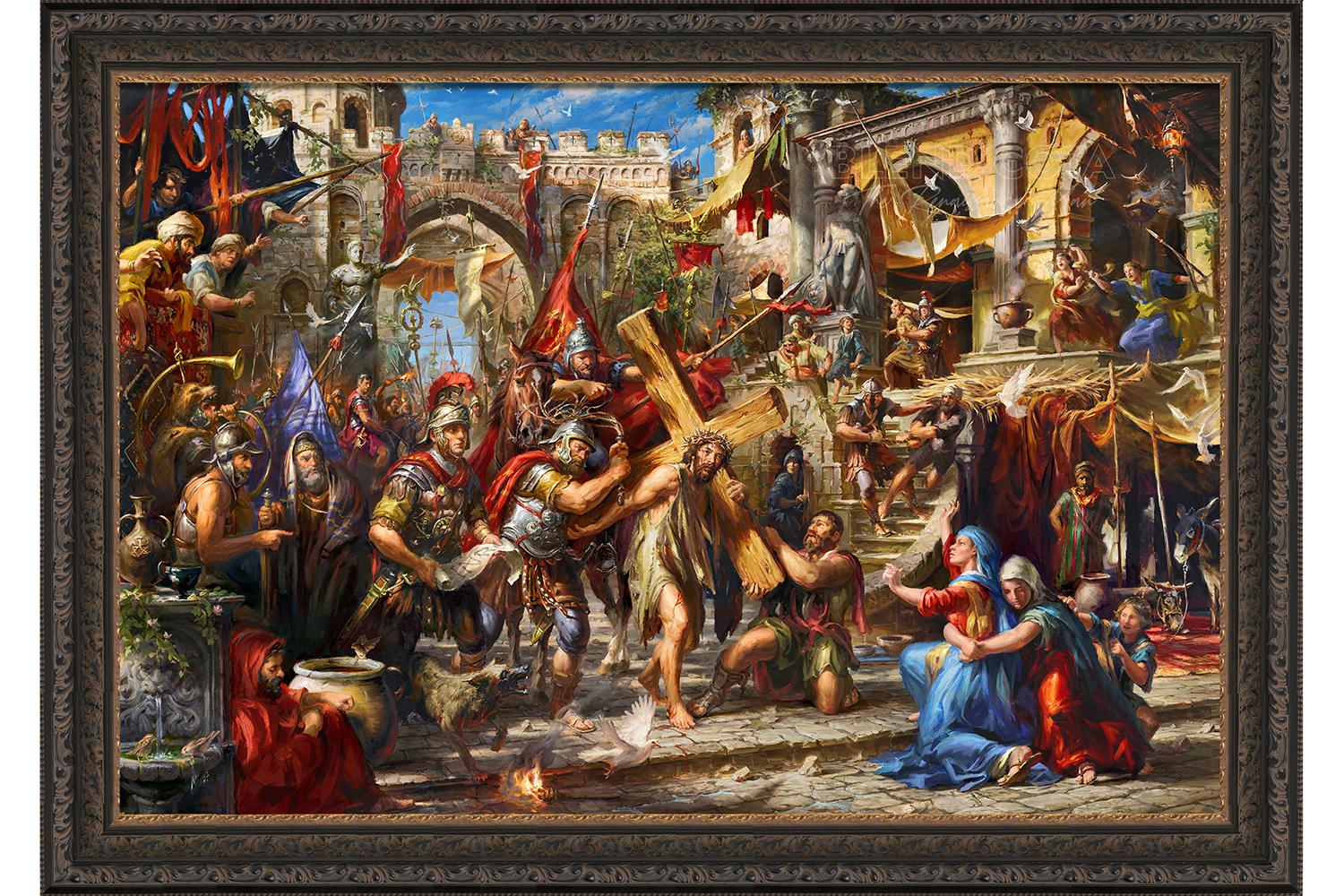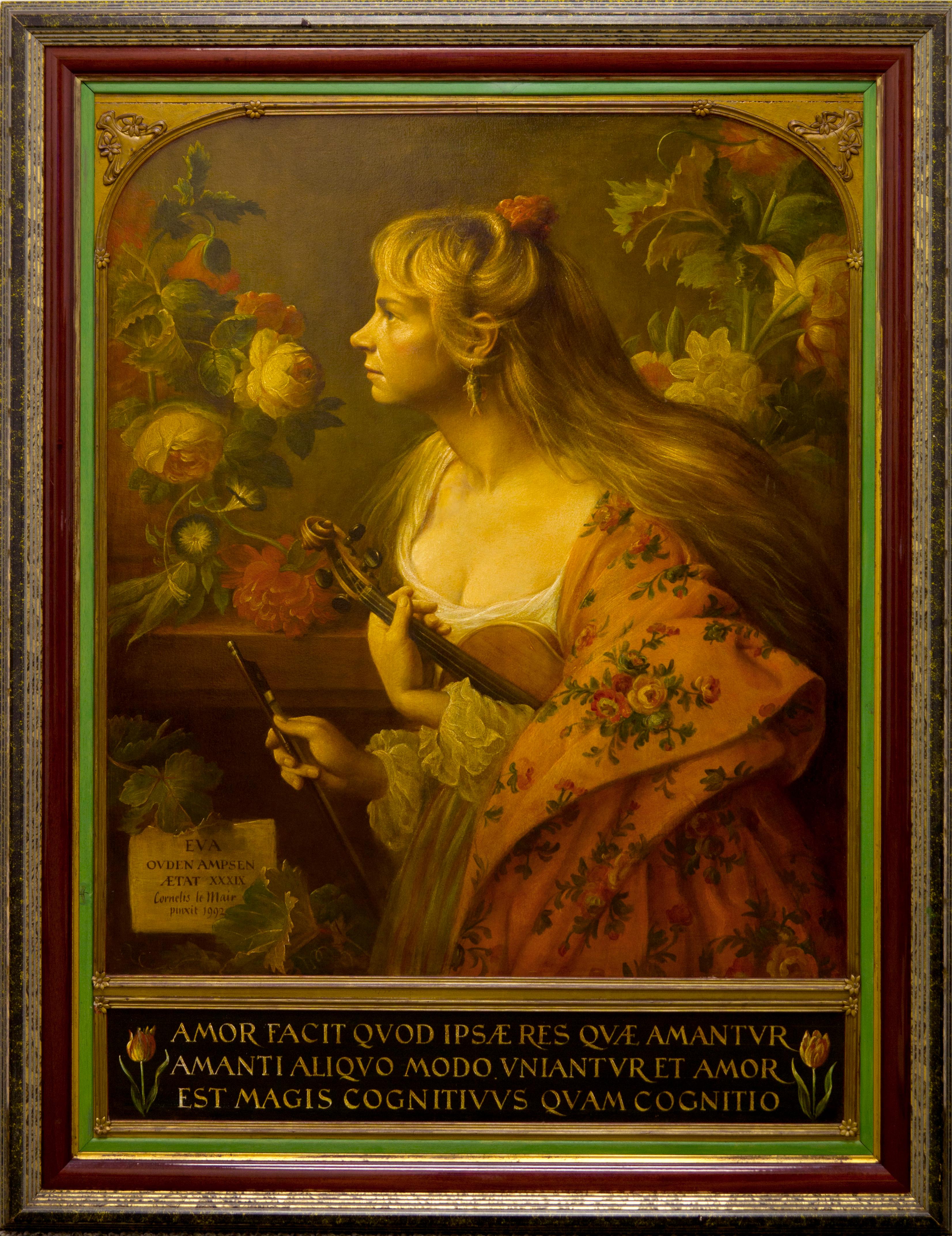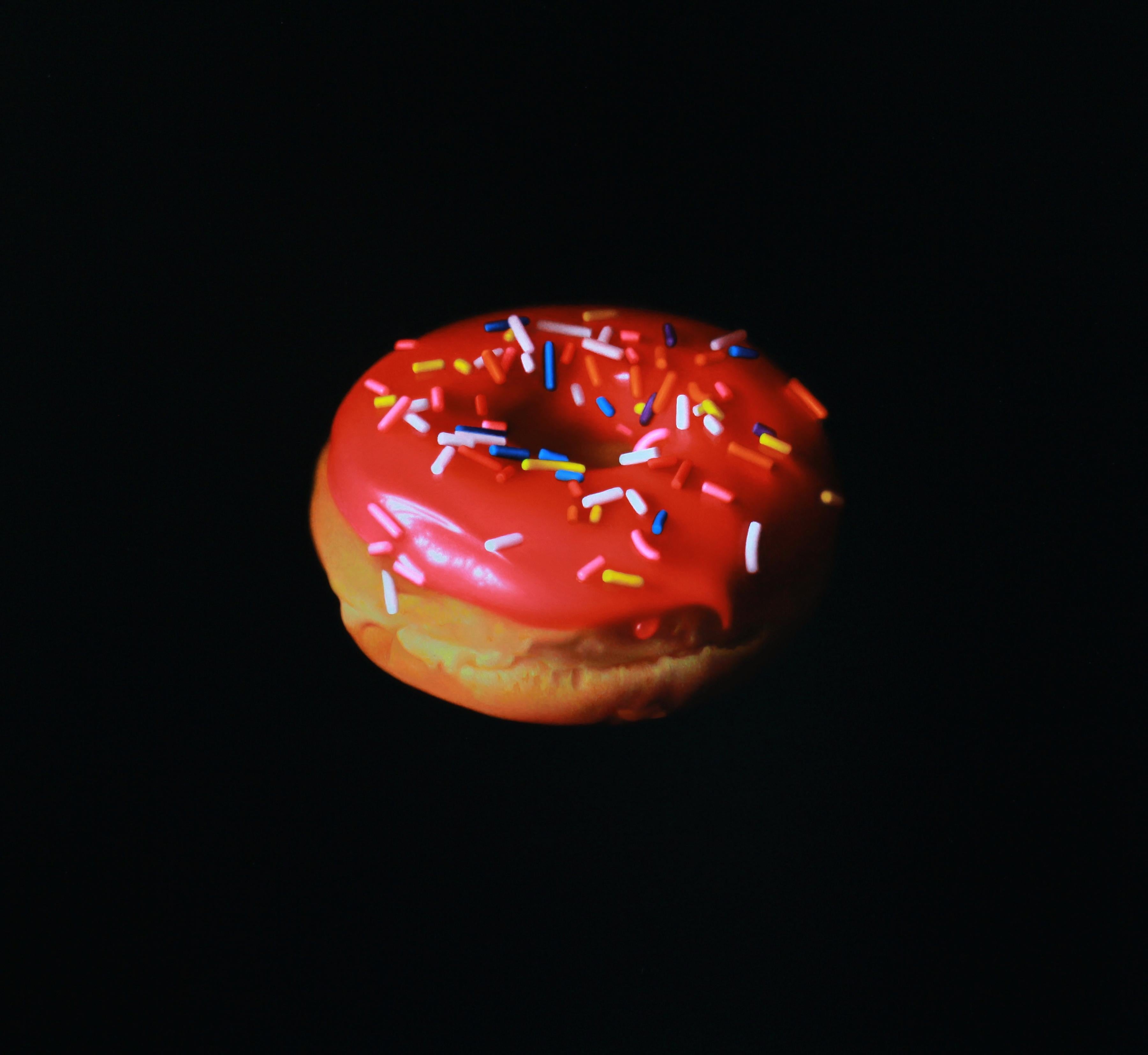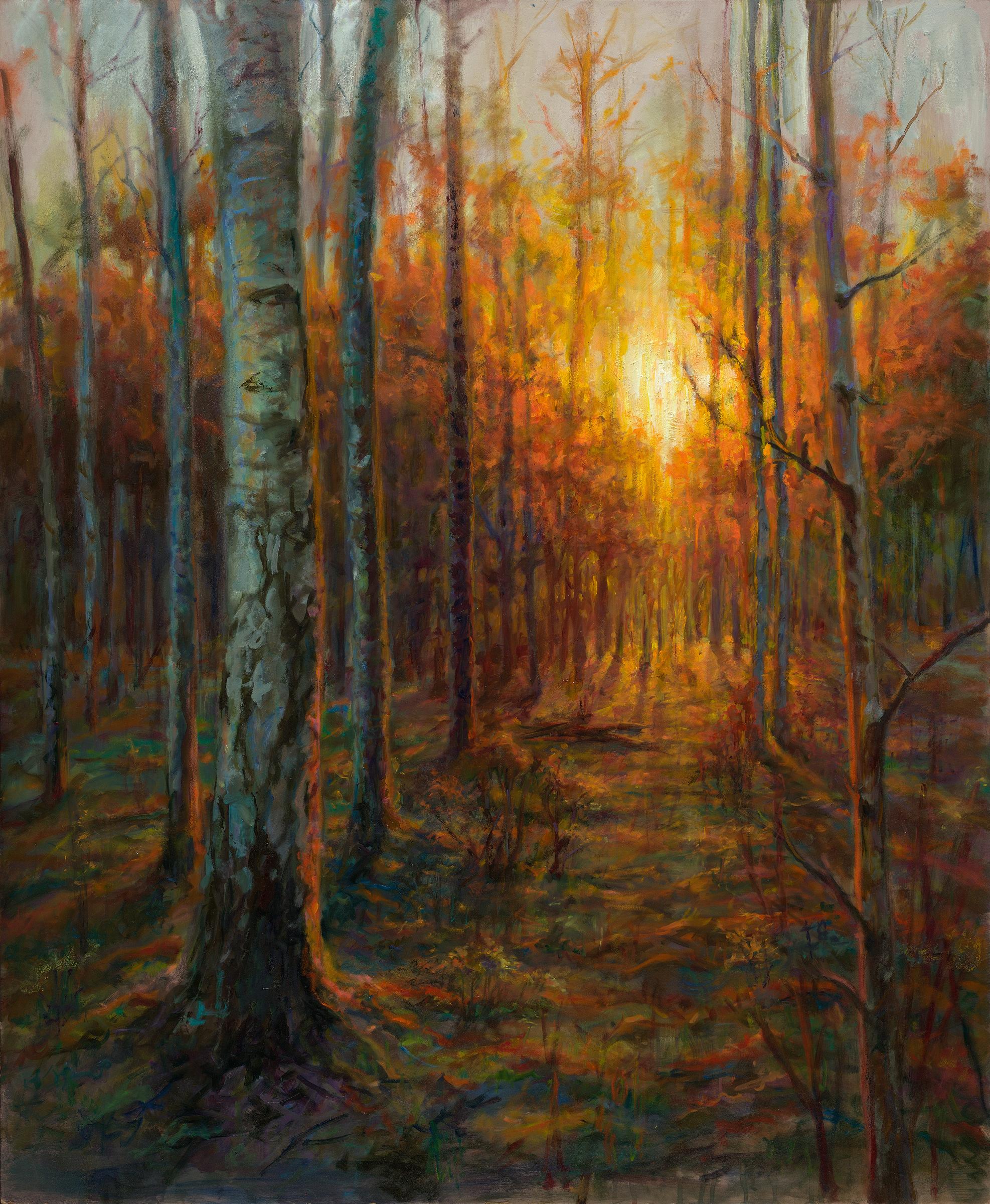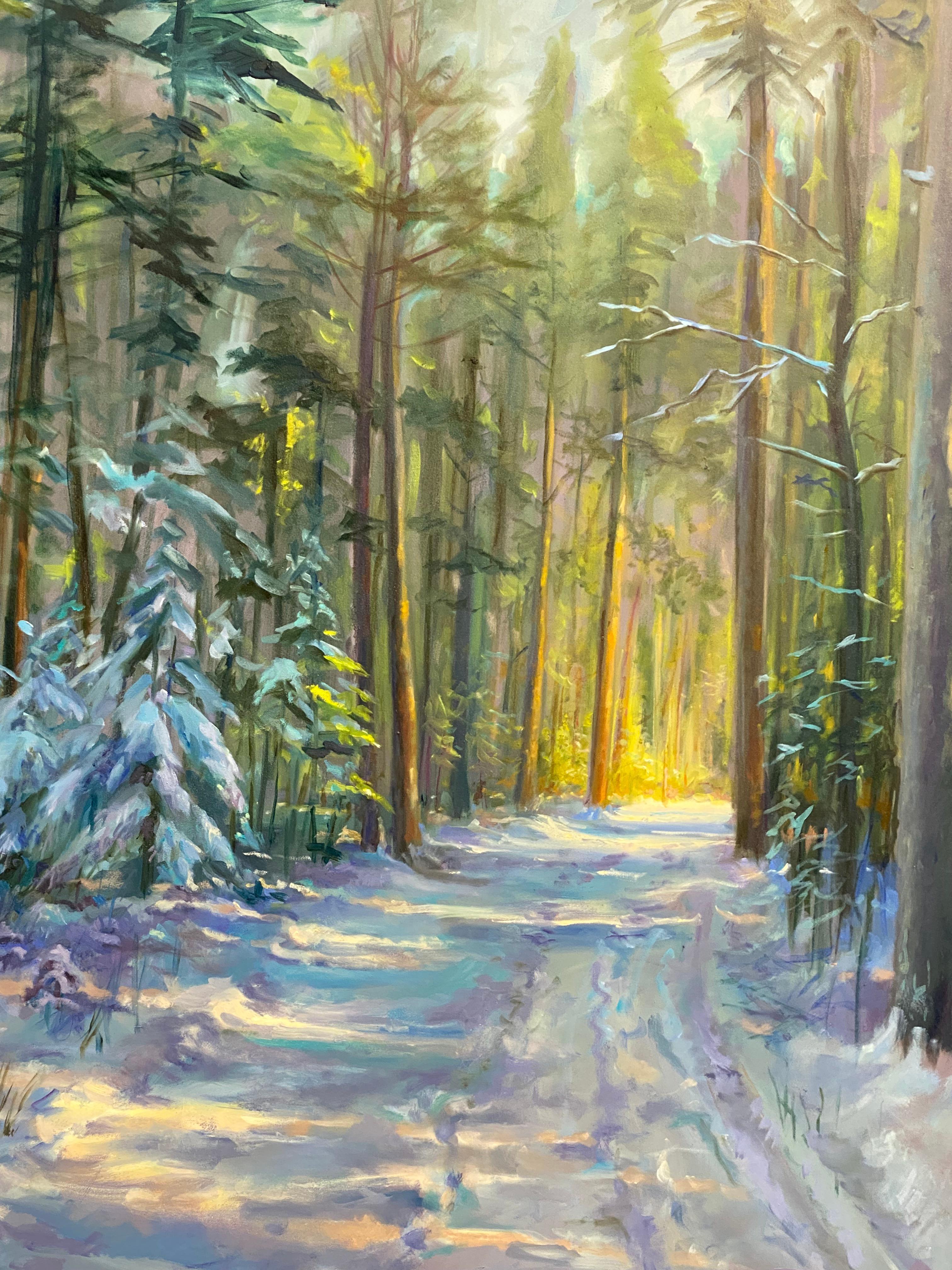Items Similar to Illuminated Manuscript Painting by the German School
Want more images or videos?
Request additional images or videos from the seller
1 of 9
German SchoolIlluminated Manuscript Painting by the German SchoolPainted in the early 16th century
Painted in the early 16th century
About the Item
Extraordinary in its beauty and rarity, this early 16th-century German painting of an illuminated manuscript showcases a masterful trompe l’oeil effect. Unequivocally among the finest of only 17 known works of its kind, the oil on panel is both rare and captivating. With illusory pages that appear to leap from the panel, this virtuosic painting of a hand-colored book suspended into space is exceptional.
Created more than four centuries ago, the composition evokes a strong sense of realism. Executed by a masterful Northern Renaissance artist of the German school, the illuminated manuscript pictured shows the astonishing splendor of the historical books of the period. Sumptuously decorated with scrolling floral motifs in the margins, the manuscript appears before a deep black background, heightening the trompe l’oeil illusion of depth through its strong contrast and the naturalistic shadows falling across the fluttering pages. It has been said that of the 17 known versions of this composition, ours stands alone in its precision in both perspective and the play of light and shadow.
The visible folios feature choral arrangements and other texts, indicating the pictured manuscript likely served a role in the celebration of church services. In fact, other examples of manuscript paintings from the period were used to serve as placeholders for the missals, lectionaries and breviaries when they were stored away following worship. The famed choral lectern from the Olivetan monastery of Santa Maria in Organo, Verona offers an example of how such paintings were displayed in churches.
While there is no doubt some of these extraordinary works of art were intended for use in churches, scholars believe that oil paintings of illuminated manuscripts were also commissioned by elite and scholarly 16th-century collectors. The advent and widespread use of the printing press transformed the social fabric of Europe at the turn of the 16th century, and the production of printed books was far less laborious and time-consuming than painstakingly hand-painting and illuminating manuscripts. By the time this panel was painted in the first half of the 16th century, illuminated manuscripts — already highly valuable and exclusive for the elite — were becoming obsolete. The wealthy patron of these paintings was almost certainly someone who valued knowledge and sought to preserve the hand-wrought artistry of those captivating early manuscripts.
The other few German school manuscript paintings reside in private and public collections around the globe, including the impressive collections of Eltz Castle in Germany and Ambras Castle in Austria.
Painted in the early 16th century
Panel: 18" high x 20 1/4" wide
Frame: 25" high x 27 5/8" wide x 2 1/4" deep
Exhibitions:
Flassans-sur-Issole, France, Exposition Peyrassol, April 1-November 1, 2022
Provenance:
Private collection, Germany
Private collection, Geneva
M.S. Rau, New Orleans
- Creator:German School (German)
- Creation Year:Painted in the early 16th century
- Dimensions:Height: 25 in (63.5 cm)Width: 27.63 in (70.19 cm)Depth: 2.25 in (5.72 cm)
- Medium:
- Movement & Style:
- Period:
- Condition:
- Gallery Location:New Orleans, LA
- Reference Number:
About the Seller
5.0
Vetted Seller
These experienced sellers undergo a comprehensive evaluation by our team of in-house experts.
Established in 1912
1stDibs seller since 2013
15 sales on 1stDibs
Typical response time: 5 hours
- ShippingRetrieving quote...Ships From: New Orleans, LA
- Return PolicyThis item cannot be returned.
More From This SellerView All
- The Bass Season by John AthertonLocated in New Orleans, LAJohn Atherton 1900-1952 American The Bass Season Saturday Evening Post cover, June 29, 1946 Signed "Atherton" (lower right) Inscribed "The Bass Season opens in the east July 1st /...Category
20th Century American Modern Still-life Paintings
MaterialsCanvas, Oil
- Vases Aux Chrysanthèmes By Auguste HerbinBy Auguste HerbinLocated in New Orleans, LAAuguste Herbin 1882-1960 French Vases aux chrysanthèmes Signed 'Herbin' (lower right) Oil on canvas This bold and vivid still life was composed by French painter Auguste Herbin, ...Category
20th Century Post-Impressionist Still-life Paintings
MaterialsOil, Canvas
- Fleurs Dans Un Vase Avec Partition Musicale By Paul GauguinBy Paul GauguinLocated in New Orleans, LAPaul Gauguin 1848-1903 French Fleurs dans un vase avec partition musicale (Flowers in vase with musical score) Signed “P. Gauguin 74/76” (lower right) Oil on canvas Early works b...Category
19th Century Post-Impressionist Still-life Paintings
MaterialsCanvas, Oil
- Saint Cosmas And Saint Damian Attributed To Bonifacio BemboBy Bonifacio BemboLocated in New Orleans, LAAttributed to Bonifacio Bembo c.1444-1477 Italy Saint Cosmas and Saint Damian Tempera on panel These exceptionally rare early Renaissance panels of Saint Cosmas and Saint Damian are an extraordinary new discovery. Based on the research of art historians Marco Tanzi and Andrea de Marchi, it is believed that these represent the missing panels from the famed polyptych formerly displayed on the altar of the Chapel of San Nicola da Tolentino in the Church of Sant’Agostino in Cremona, Italy. To find two matching early Renaissance panels outside of a museum or church, particularly in such remarkable condition, is an extraordinary rarity. The central and left-sided panels of the original five-part polyptych are currently in the collection of the Museo Civico Ala Ponzone in Cremona. These panels have luckily remained intact, and respectively portray the Madonna and Child Enthroned with Angels and Donor, Saint Nicholas of Tolentino (the chapel’s namesake) and Saint George. While the present panels have since been reduced, that they belong to the Cremonese altarpiece is confirmed by a number of stylistic elements. All five panels contain the same rich decorative arabesque pattern on their stamped gold background, while the figures’ knurled haloes are identical in both their fineness of line and use of perspective. The proportions of the figures coincide perfectly; Saints Cosmas and Damian would have originally also been depicted as full-length figures, fitting into the vertical, Gothic style of the altarpiece. According to the Christian religion, Saint Cosmas and Saint Damian were 3rd century physicians born in Arabia. Little is known about their lives except that they were reputedly twin brothers and that they were martyred in Syria during the persecution of Emperor Diocletian. It was believed that the saints were skilled in healing, and when their medicines failed, their faith and prayers could always perform miracles. Thus, the saints are often depicted with their medical equipment while wearing the traditional medieval doctor’s garb of crimson robes and distinctive round red hats. The saints are similarly depicted in the present panels, though considering the manner in which they have been cut, their medical tools are not immediately evident. The saints were highly popular as patrons of wealthy families during the Gothic and Renaissance eras, particularly the Medici, and thus they occur frequently in art from the era. The twins, for instance, are found in the famed San Marco Altarpiece by Fra Angelico in the San Marco Museum (Florence), as well as in a set of Medici panels crafted by Filippo Lippi...Category
15th Century and Earlier Renaissance Portrait Paintings
MaterialsTempera, Panel
- L’embarquement by Gaston La ToucheBy Gaston La ToucheLocated in New Orleans, LAGaston La Touche 1854 - 1913 French L’embarquement The Embarkment Signed "Gaston La Touche" (lower right) Oil on panel A fashionable group of merrymakers boards a rowboat at sundown in this oil on panel by renowned French painter Gaston La Touche. Softly lit and lushly detailed, the work represents the artist’s talent for capturing the gaiety of the Belle Époque. With its luminous coloring and feathery brushwork, this oil evokes the style and joie de vivre of the era rendered in La Touche’s distinctive, mature style. Fresh and airy, the work is a beautiful example of the artist’s skill at capturing the subtle qualities of light and color. Set against the plein air backdrop of a wooded pond awash in the soft glow of the golden hour, the scene reflects the influence of the Impressionists. The subject also recalls works by Manet, Monet and Renoir, who delighted in depictions of modern leisure among the expanding middle class. The scene is an informal one, and its unconventional cropping suggests that the viewer is invited to take a seat in the boat and join the group on their outing. Such relaxed, inviting scenes were remarkably popular among contemporary, modern audiences. However, La Touche's style is singular, possessing an element of fantasy and romance that set him apart from the Impressionists. Gaston La Touche was born in St. Cloud, outside of Paris, in 1854, and he showed a keen interest in art from a young age. At ten years old, he began taking private art instruction, which lasted until 1870, when his family was forced to flee to Normandy amid the Franco-Prussian War. This was the only formal art training La Touche would ever receive. Despite his lack of Academy training, he made his debut at the Paris Salon of 1875 with a sculptural medallion and etchings, and he exhibited his first painting at the Salon of 1881. Although he began his career painting dark-toned realist compositions, by 1890, his style had shifted to what would become his signature — a lighter, brighter, idealistic society world. The artist was associated with practically all of the most influential artists and thinkers of late 19th century France, including Édouard Manet, Edgar Degas, Émile Zola, who frequently met at the legendary Cafe de la Nouvelle Athenes to share their thoughts on modern society. In 1900, he was named a Chevalier of the Legion d'Honneur and an Officer in 1909. Additionally, he was well-decorated at the grand...Category
Late 19th Century Impressionist Figurative Paintings
MaterialsPanel, Oil
- The Tax Collectors attributed to Marinus van ReymerswaeleLocated in New Orleans, LAMarinus van Reymerswaele c.1490 – c.1546 Dutch The Tax Collectors 16th century Oil on wood panel Marinus van Reymerswaele stands among the greatest and most beloved artists of 16th-century Antwerp. Entitled The Tax Collectors, this oil on board original exudes the technical skill and life-like vibrancy for which the artist is renowned. In a quiet interior scene, two men sit at a green table covered in coins, jewels, and empty moneybags. While the man in the red turban...Category
16th Century Figurative Paintings
MaterialsOil, Wood Panel
You May Also Like
- The Way of Love - Original oil on canvas paintingBy Blend CotaLocated in Montreal, QuebecIn the eyes of others, we see sadness and fear, jealousy and hate. In the eyes of Jesus, we see the love that chooses to bear the cross of human sin and suffering on the Road to Calv...Category
2010s Renaissance Paintings
MaterialsDelft, Cotton Canvas, Canvas, Oil
- Eva With ViolinBy Cornelis Le MairLocated in Atlanta, GAItem is in excellent condition and has only been displayed in a gallery setting. This painting was procured direct from the artist's studio. Cornelis le Mair is truly a renaissance ...Category
1990s Northern Renaissance Interior Paintings
MaterialsOil, Board
- "Pink Sprinkle Donut" Oil PaintingBy Jason WalkerLocated in Denver, COJason Walker's (CAN based) "Pink Sprinkle Donut" is an original, handmade oil painting that depicts a donut glazed with pink frosting and sprinkles set against a black background. About the Artist: Jason Walker’s imagery reflects popular culture: from Disney’s Mary Poppins or Mickey Mouse to frosted doughnuts. As observer and conveyor of cultural icons, he is an anthropologist and his beautiful and often endearing paintings resonates with art viewers. But this Toronto artist is also an analyst. Conceived with the clear-eyed vision of a native of Nairn, Scotland, Walker’s compositions challenge viewers to consider contemporary culture. Through his iconography, Walker creates artifacts, a paint-on-canvas time capsule for future generations. His images are representational rather than abstract. His subjects from Dorothy from the Wizard of Oz to Peter Pan’s Tinker Bell are non-elitist, international, and easily identified. A portrait of our time, Walker’s renditions are intimate and lifelike, crafted with diffused edges or Old-Master chiaroscuro. Painted in Renaissance jewel...Category
2010s Realist Still-life Paintings
MaterialsOil, Panel
- Autumn- 21st Century Contemporary Dutch Landscape PaintingBy Keimpe van der KooiLocated in Nuenen, Noord BrabantKeimpe van der Kooi Autumn 122 x 100 cm framed: 132x 110 cm ( This frame is included) Oil on wood panel This Painting is made by Dutch Artist Keimpe van der Kooi. He likes to paint...Category
2010s Contemporary Still-life Paintings
MaterialsOil, Wood Panel
- Winter- 21st Century Contemporary Dutch Landscape Painting with SnowBy Keimpe van der KooiLocated in Nuenen, Noord BrabantKeimpe van der Kooi Winter 116 x 83 cm Framed: 126x 93 cm ( This frame is included) Oil on wood panel This Painting is made by Dutch Artist Keimpe van der Kooi. He likes to paint s...Category
2010s Contemporary Still-life Paintings
MaterialsOil, Wood Panel
- Summer- 21st Century Contemporary Dutch Landscape PaintingBy Keimpe van der KooiLocated in Nuenen, Noord BrabantKeimpe van der Kooi Summer 100 x 122 cm framed: 110-132 cm ( This frame is included) Oil on wood panel This Painting is made by Dutch Artist Keimpe van der Kooi. He likes to paint ...Category
2010s Contemporary Still-life Paintings
MaterialsOil, Wood Panel
Recently Viewed
View AllMore Ways To Browse
Antique Germany
Antique Collector The
Production Still
Antique German Painted
German Antique Paintings
Antique German Paintings
German Antiques
Antique 17s
Still Life Floral Antique
German Renaissance
Exclusive Antiques
Antique German Book
German Paint Decorated
Antique School Book
Half Life 1
Antique 16th Century Paintings
16th Century German
Folio Black
